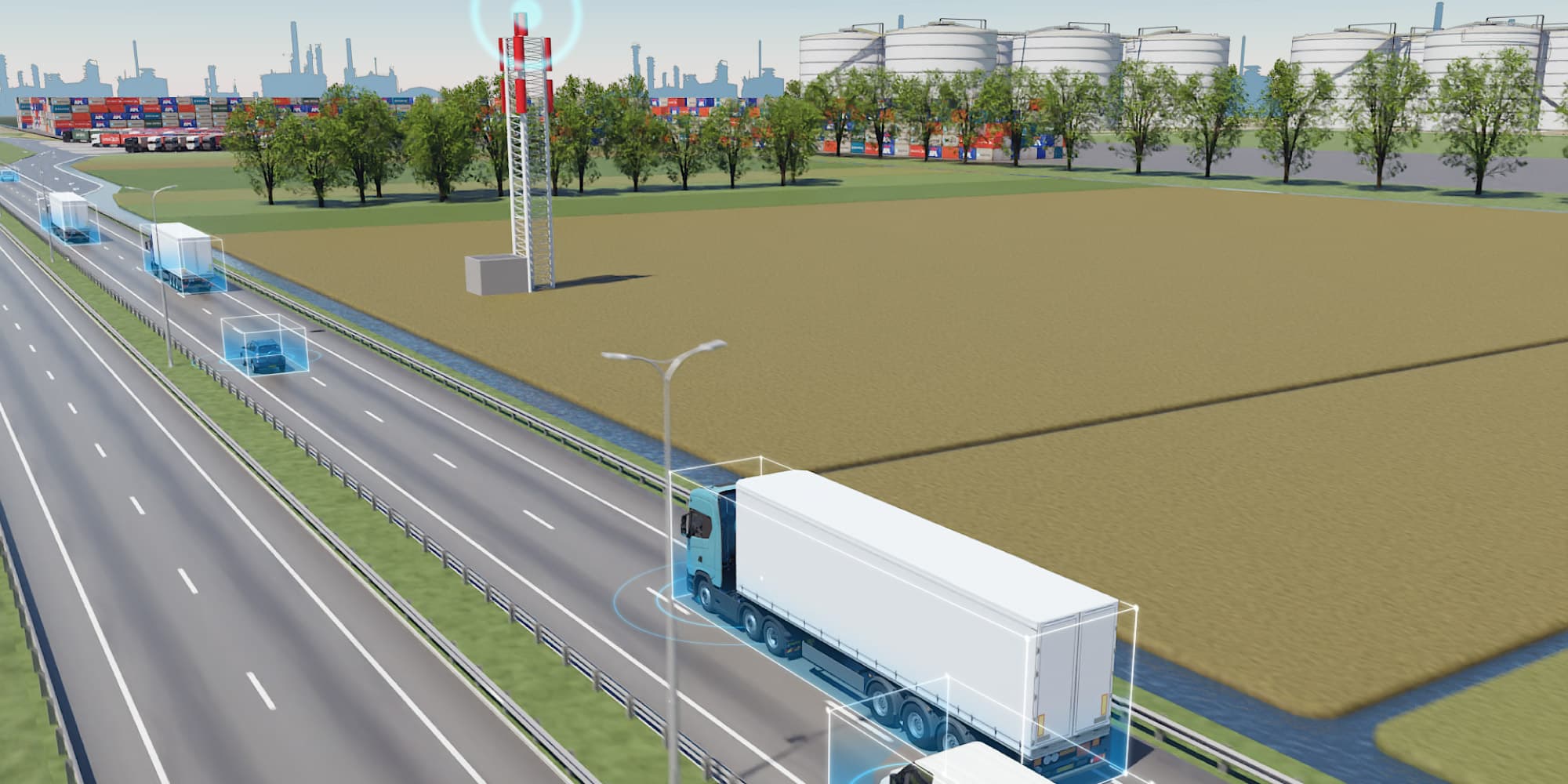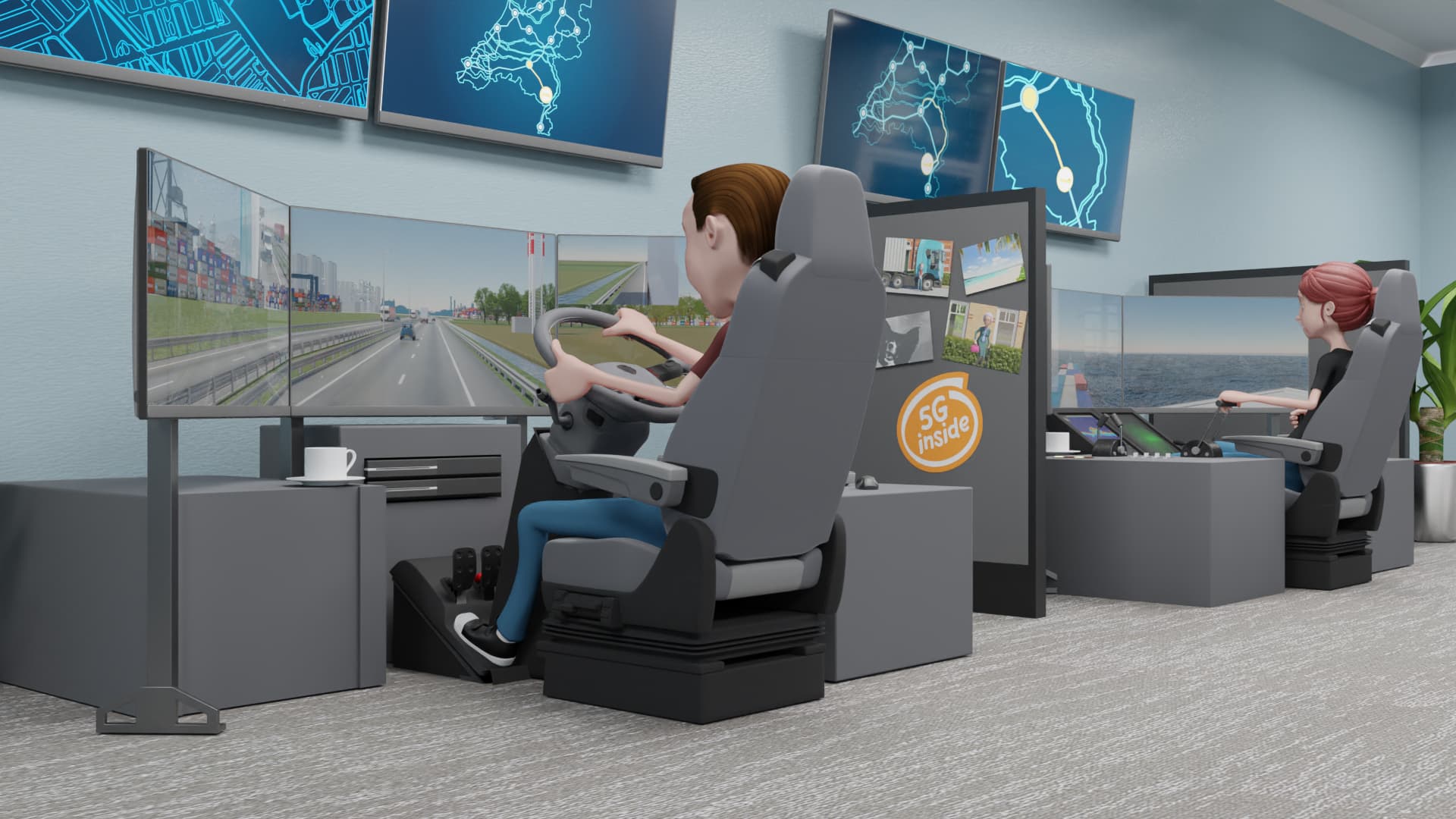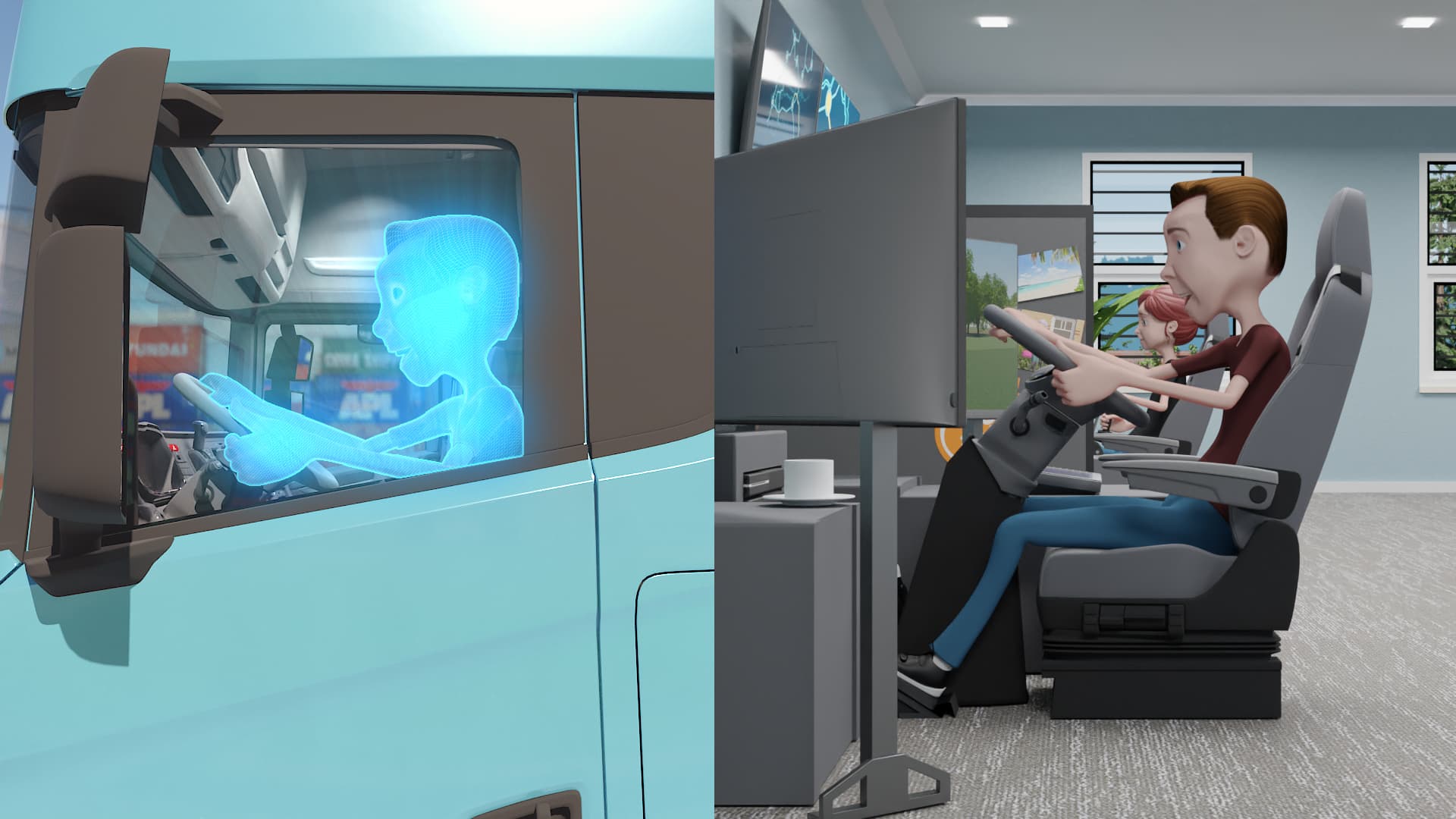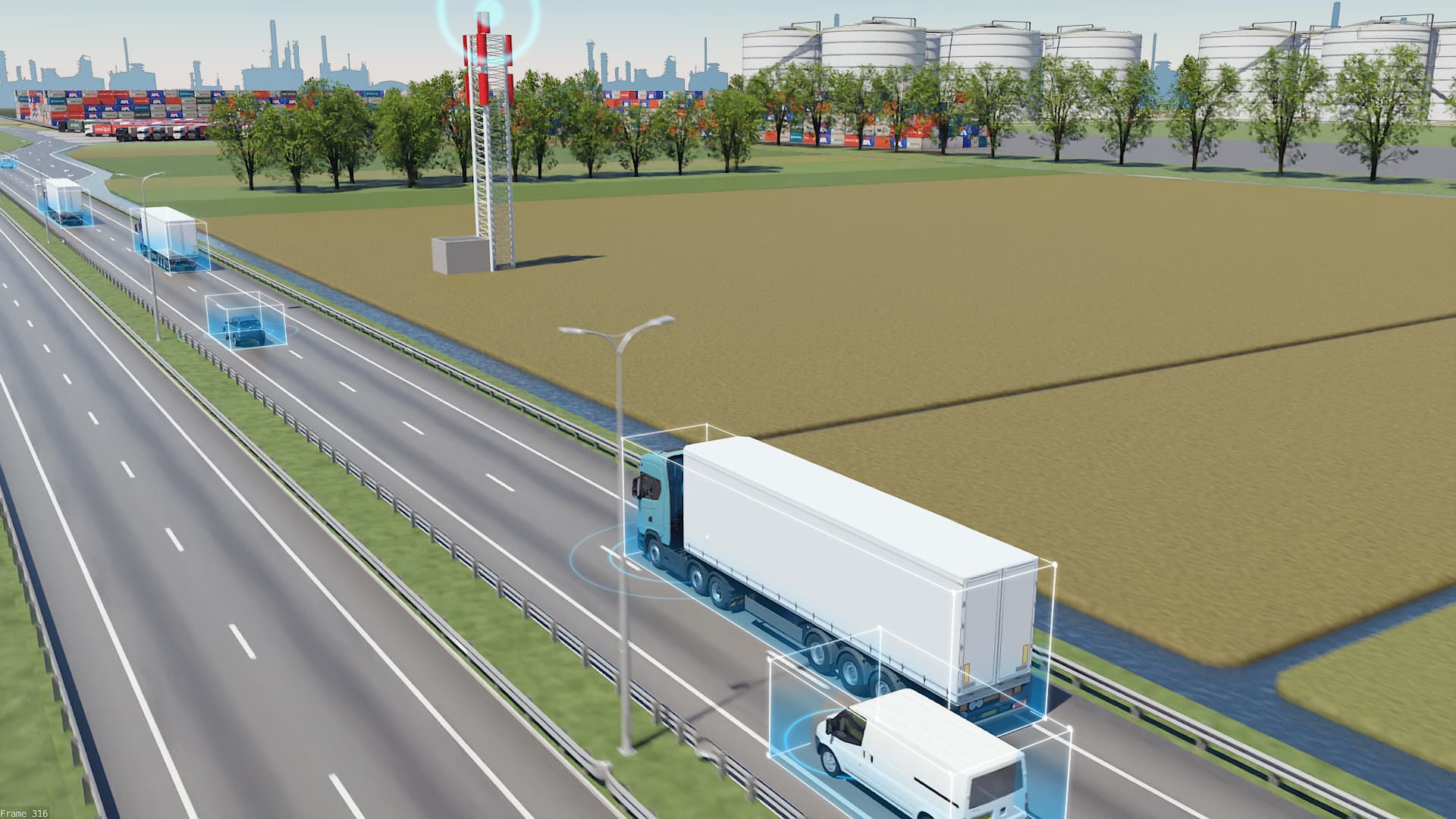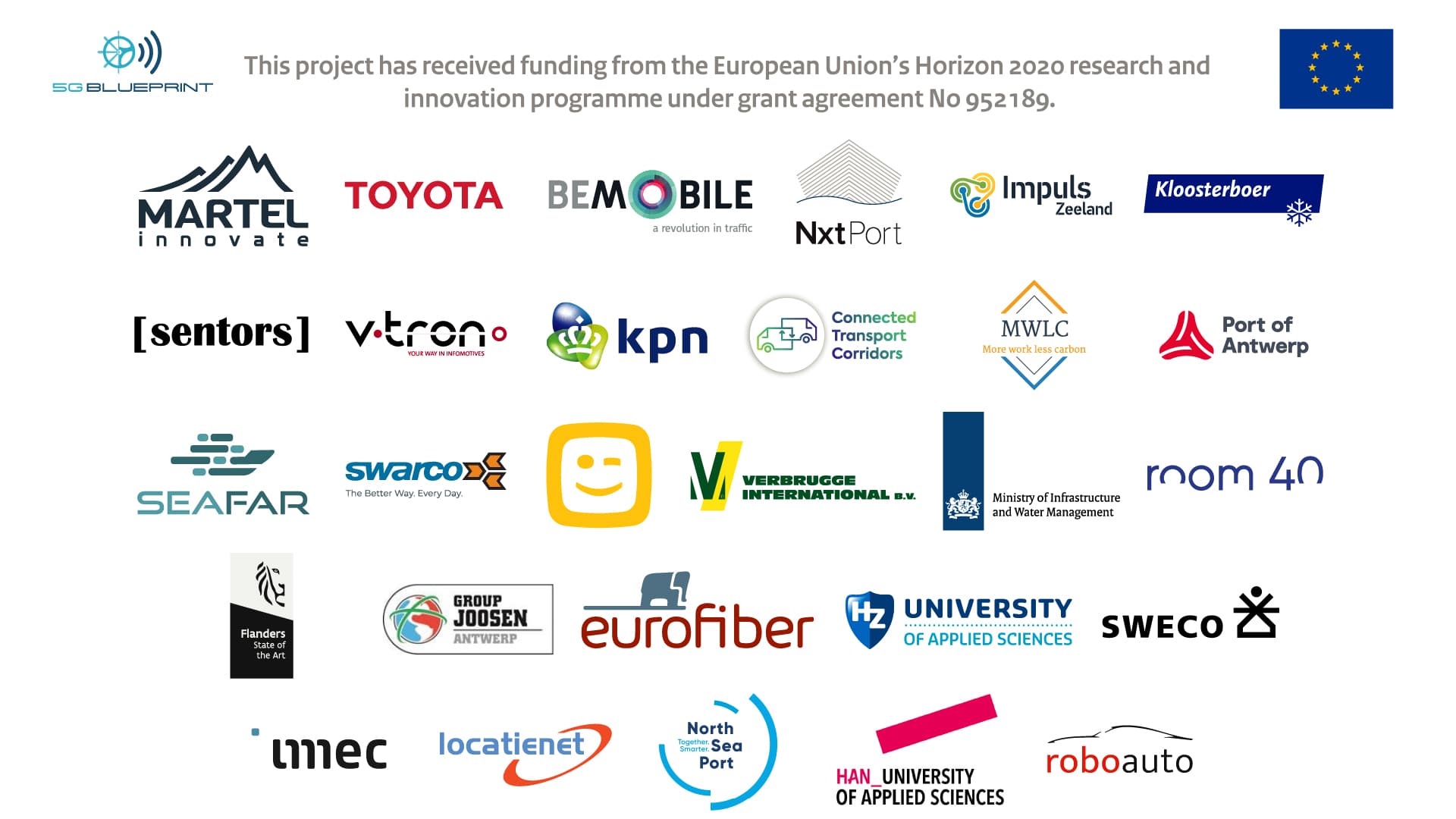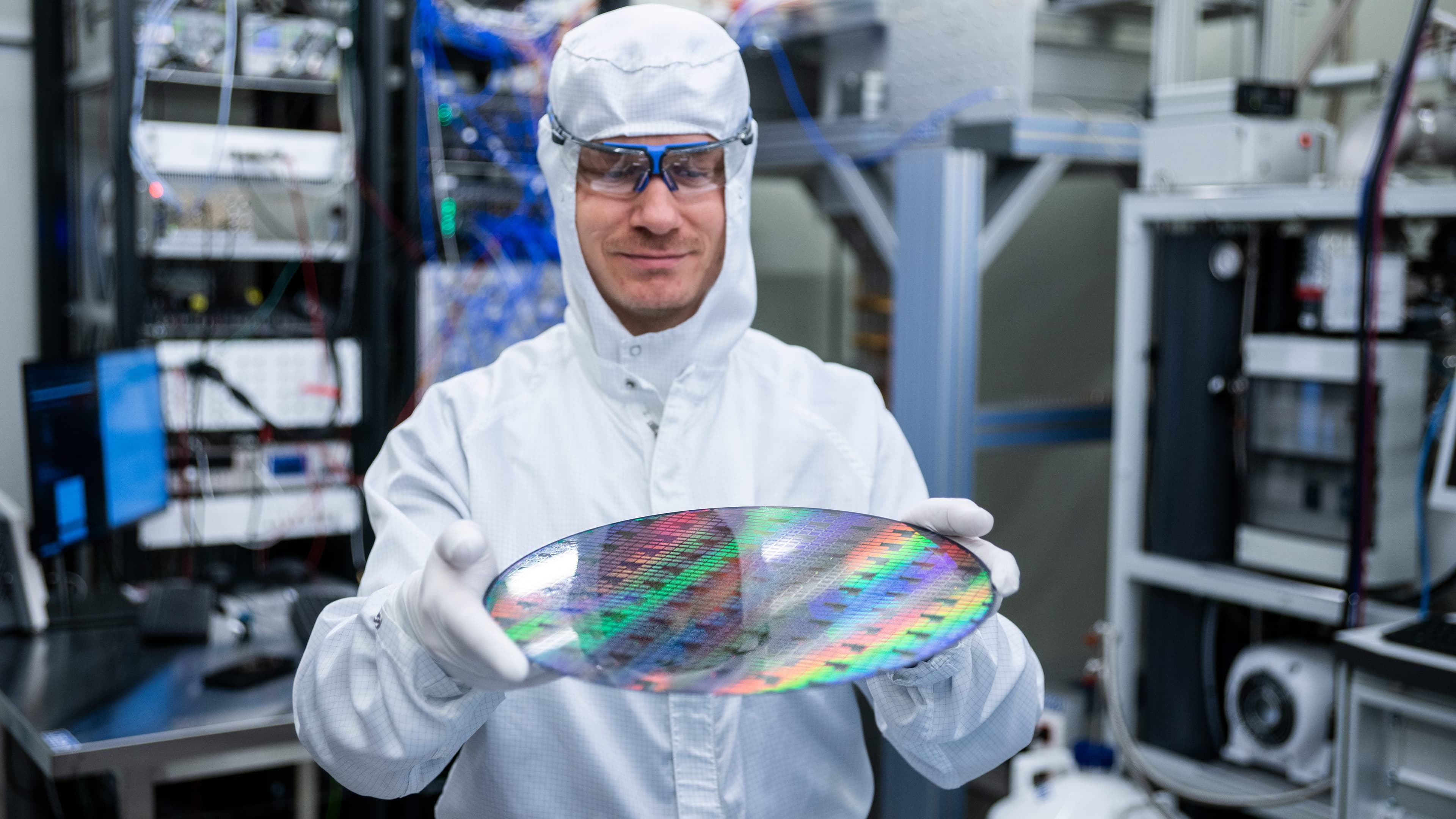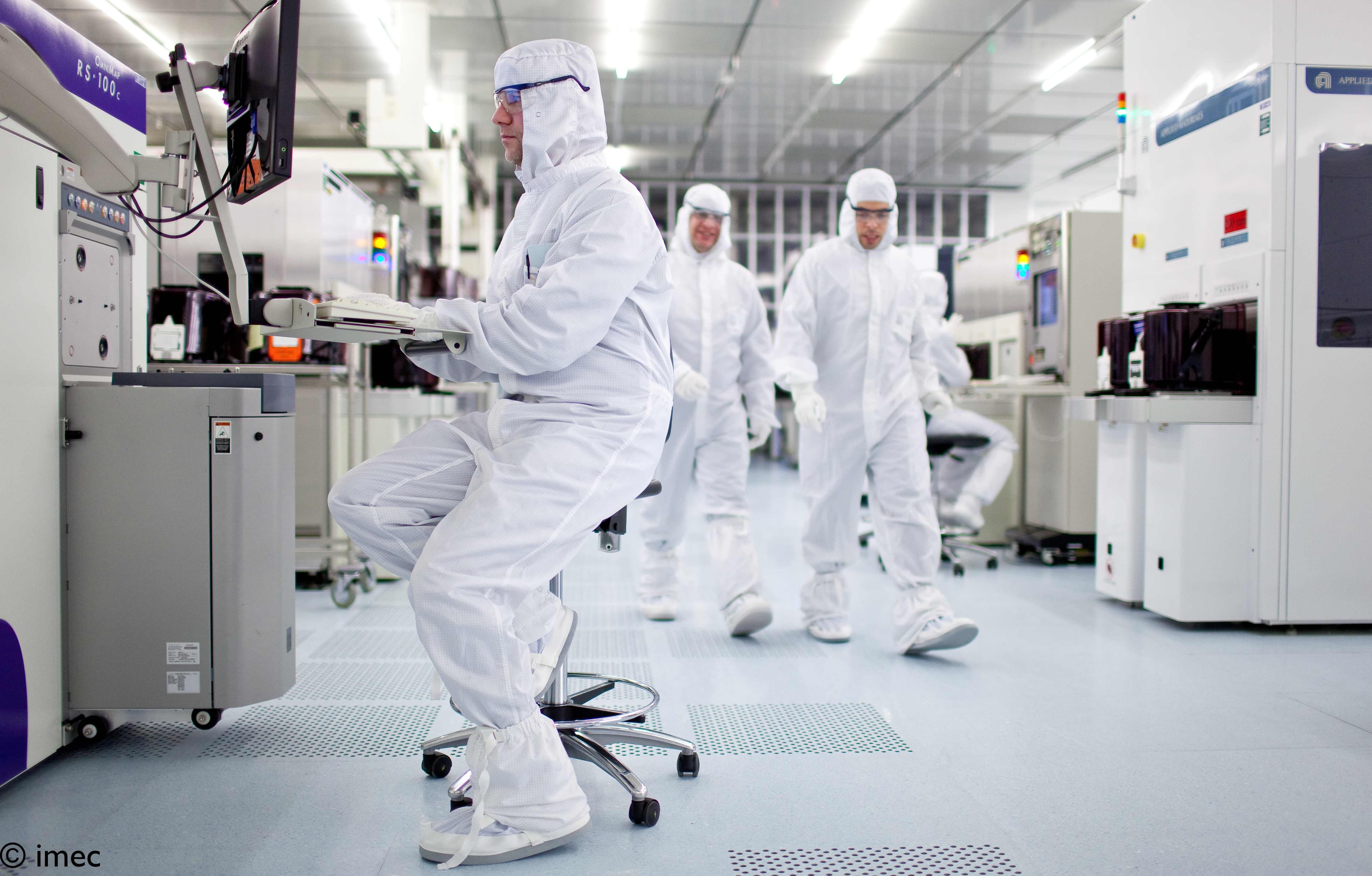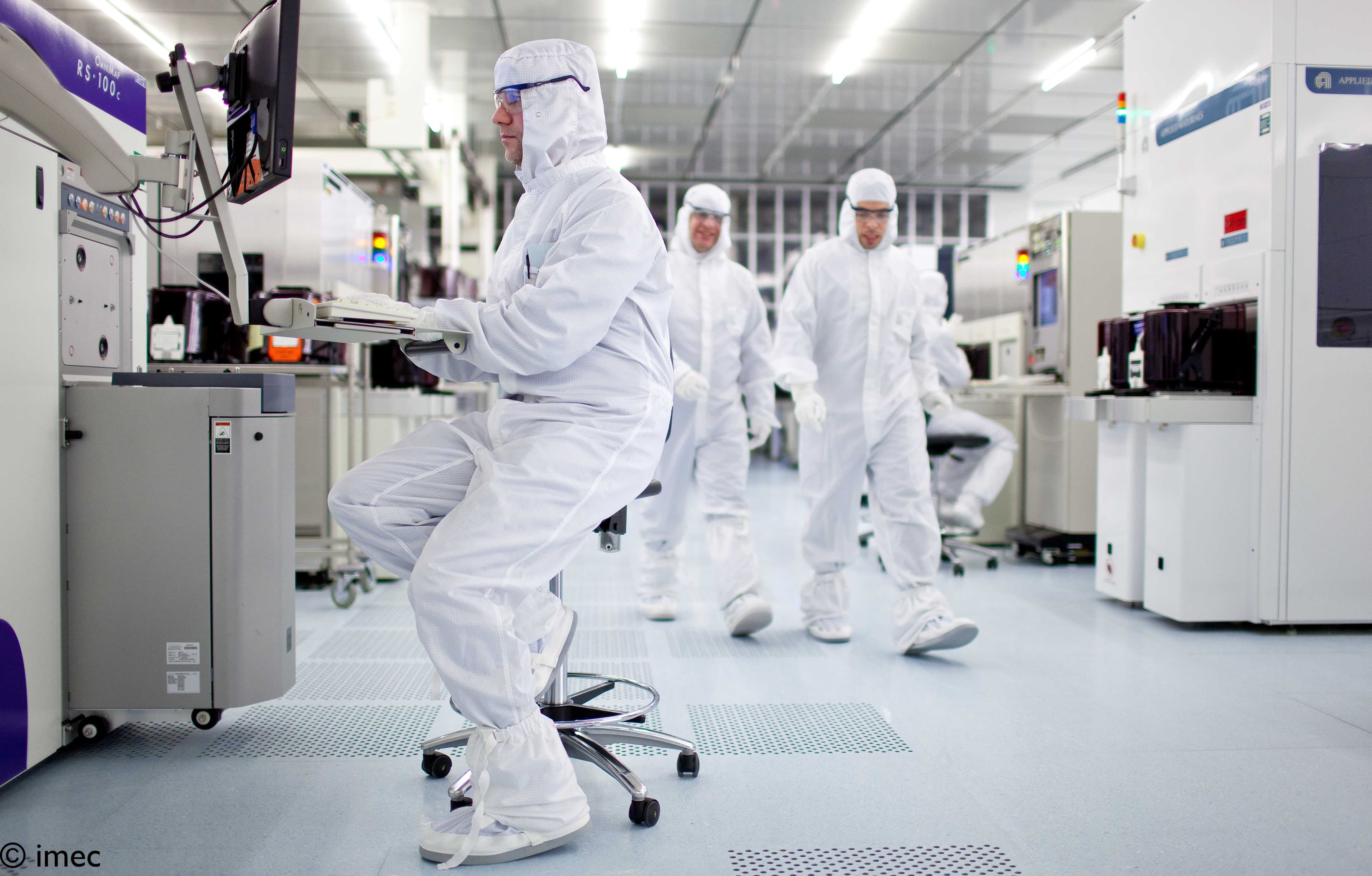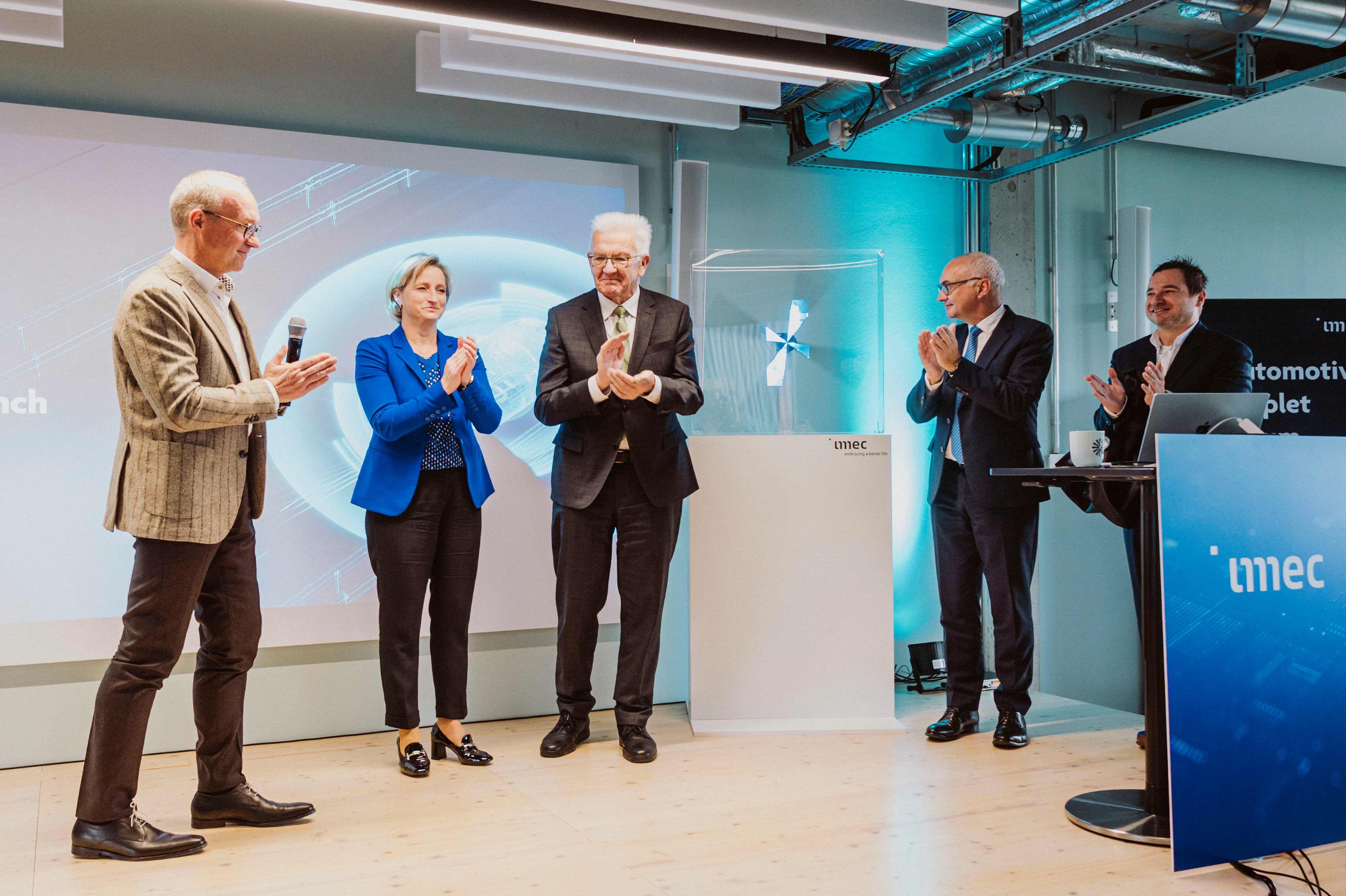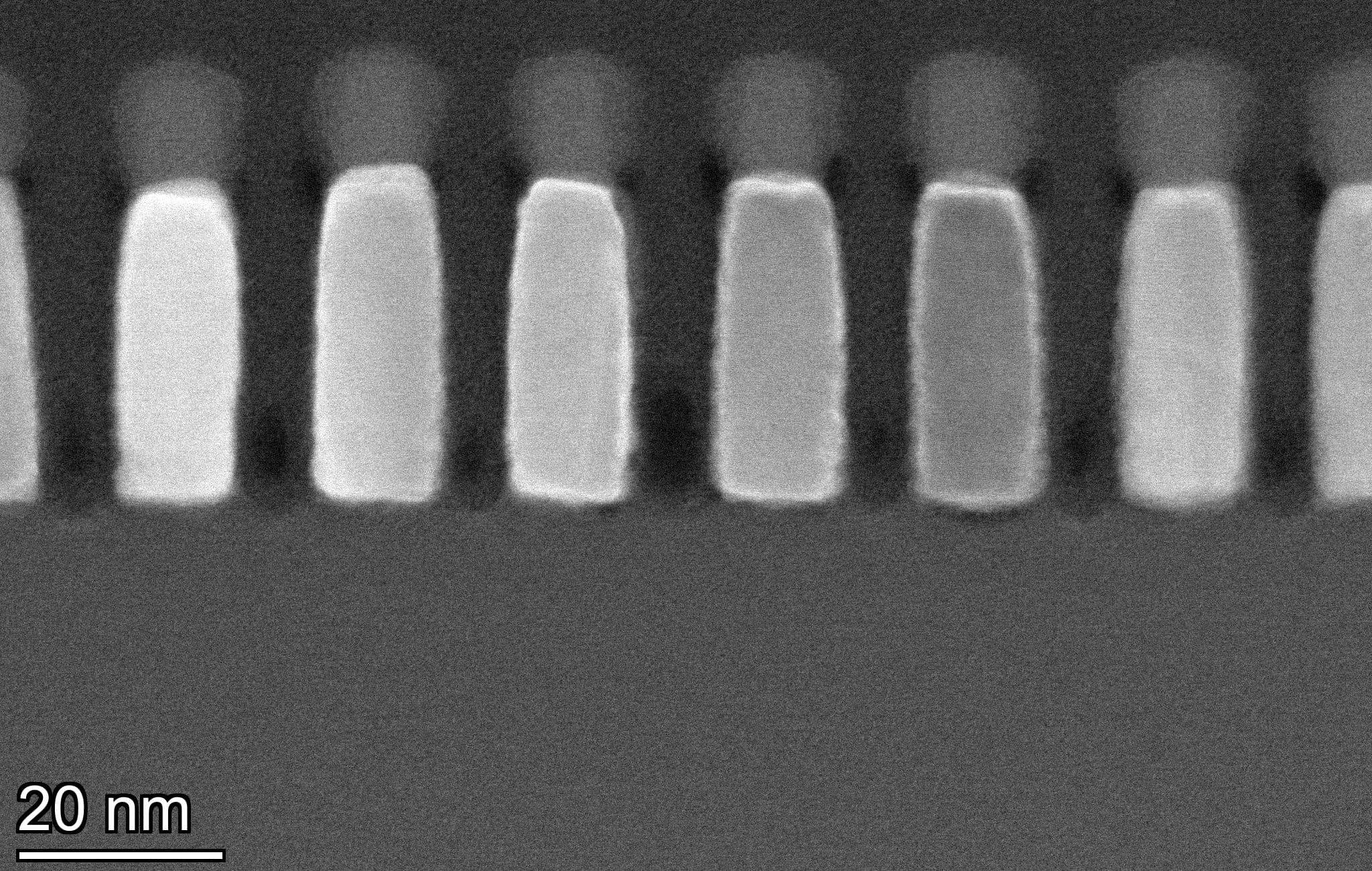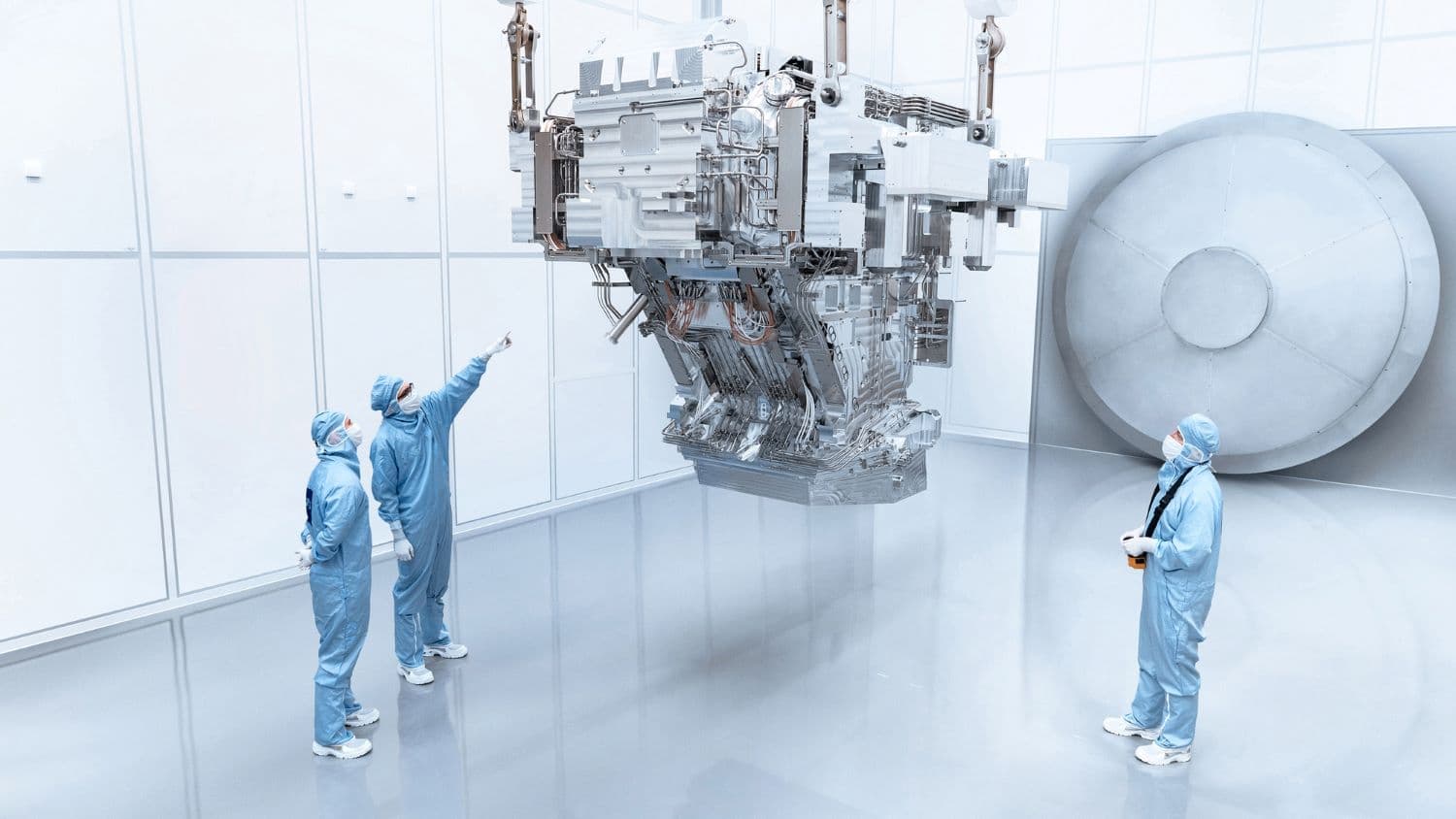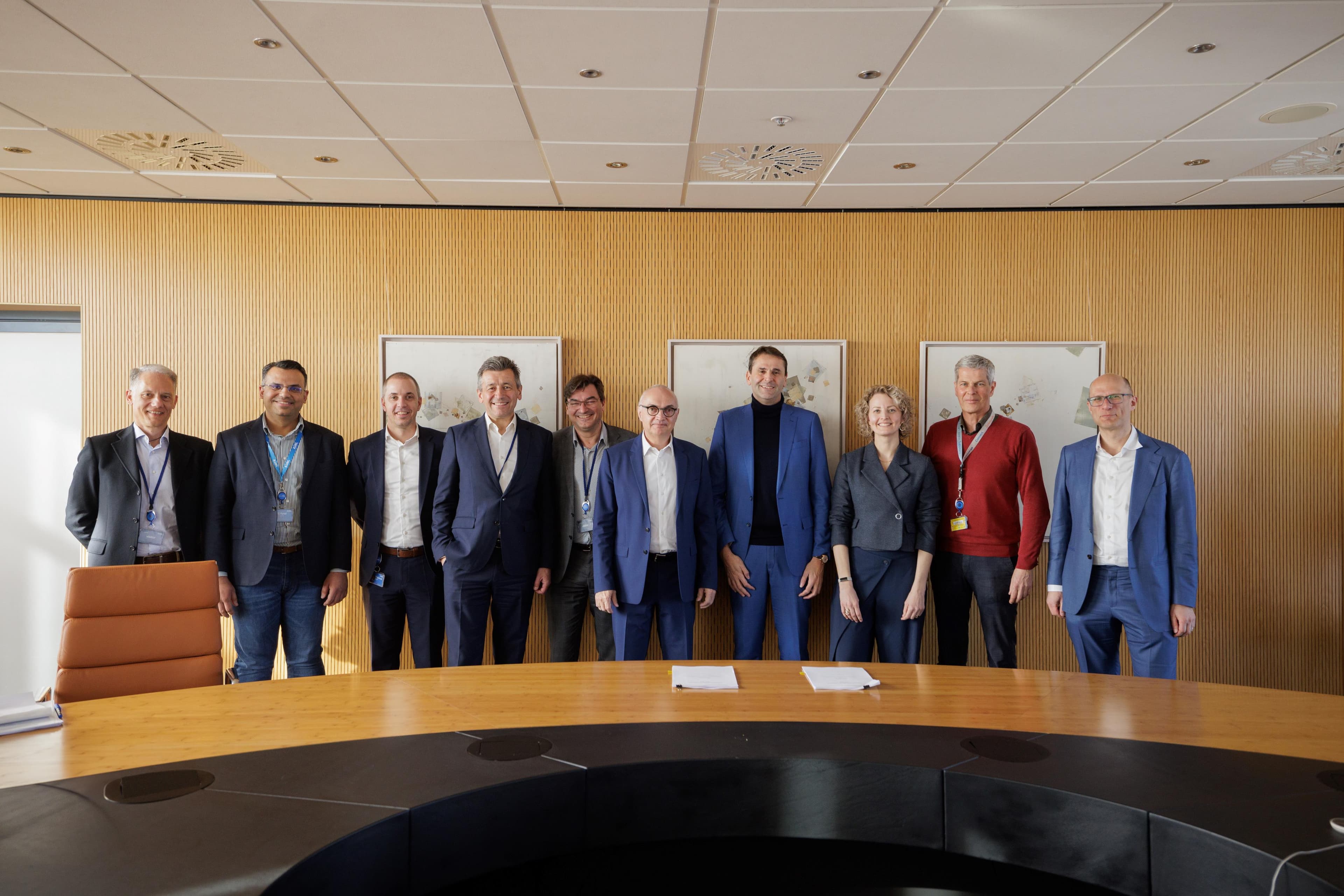The international research project ‘5G-Blueprint', a public-private partnership involving parties from the Netherlands, Flanders, Switzerland and the Czech Republic, is to receive a grant of 10 million euros from the European Union. The Dutch Ministry of Infrastructure and Water Management, together with, among others, the Flemish Department for Mobility and Public Works, North Sea Port and Port of Antwerp, the business community and academic sector, has set up a consortium of 28 parties. Together they are investigating how to increase the efficiency of transport and logistics - also across borders - using ‘tele-operation’ technology.
The 5G-Blueprint project starts on 1 September 2020 and will run for three years. The grant is being awarded as part of the EU’s ‘Horizon 2020 Research and Innovation’ programme.
The parties involved will investigate how real-time data exchange from and to vehicles, between terminals and vehicles and between vehicles and control rooms can help boost efficiency in the supply chain and compensate for driver shortages through the remote operation and support of vehicles and vessels. This is expected to not only improve the accessibility of the important –North Sea Port (Vlissingen – Terneuzen – Gent) - Antwerp logistics corridor, but also to increase employment and strengthen the competitive position. The use of new 5G telecommunication technology is instrumental in these plans.
New standard
The Blueprint project involves an investigation into digital technologies and telecommunication possibilities and examines issues such as security, costs and benefits, allocation of responsibilities, cooperation and standardisation. The insights and lessons from this three-year project will be applied directly in this region wherever possible. But they are also important as a new standard and working method - as a blueprint - for other domains and sectors.
Collaboration
The 5G-Blueprint project expands the collaboration between the Netherlands and Flanders. A great deal of knowledge and experience is already being shared as part of current programmes on intelligent traffic lights, Talking Traffic and Mobilidata. The management and further development of standards will also be designed jointly.
The participating parties are: the Dutch Ministry of Infrastructure and Water Management (including the Directorate-General for Public Works and Water Management), Martel Innovate, HZ University of Applied Sciences, Sentors, Economische Impuls Zeeland, Locatienet, Swarco Nederland, KPN, V-Tron, Hogeschool Arnhem Nijmegen, Sweco Nederland, Telenet, imec, Be-Mobile, the Flemish Department for Mobility and Public Works (including Agency for Roads and Traffic), Room40, Port of Antwerp, Nxtport, Eurofiber, Kloosterboer, More Work Less Carbon, RoboAuto, Seafar, Verbrugge International, Toyota Motor Europe, Transport Joosen, North Sea Port and Terberg Benschop.
This project has received funding from the European Union’s Horizon 2020 research and innovation programme under grant agreement No 952189. Please find the EU’s own press release here.
Questions and answers
Which parties participate in this research project?
The following parties participate in this project: Ministry of Infrastructure and Water Management (including Directorate-General of Public Works and Water Management), Martel Innovate, HZ University of Applied Sciences, Sentors, Economische Impuls Zeeland, Locatienet, Swarco Nederland, KPN, V-Tron, Arnhem Nijmegen University of Applied Sciences, Sweco Nederland, Telenet, imec, Be-Mobile, Flemisch Department for Mobility and Public Works (including Agency for Roads and Traffic), Room40, Port of Antwerp, Nxtport, Eurofiber, Kloosterboer, More Work Less Carbon, RoboAuto, Seafar, Verbrugge International, Toyota Motor Europe, Transport Joosen, North Sea Port and Terberg Benschop.
What exactly does the project involve?
The parties involved will investigate how real-time data exchange from and to vehicles, between terminals and vehicles and between vehicles and the centres may contribute to more efficiency in the supply chain, and help overcome drivers shortages through remote steering and supporting of vehicles and vessels. This is expected not only to improve the accessibility of the important logistics corridor North Sea Port (Flushing - Terneuzen - Ghent) - Antwerp, but also to increase employment and strengthen the competitive position. To that end, the project investigates digital techniques and 5G telecommunication possibilities and examines subjects such as security, costs and benefits, distribution of responsibilities, cooperation and standardisation.
The project has been budgeted at around €13.91 million, of which €10 million is supported by the European Horizon 2020 programme.
What is the relevance of the Horizon 2020 programme for Research and Innovation?
Horizon 2020 is the financial instrument implementing the Innovation Union, a Europe 2020 flagship initiative aimed at securing Europe's global competitiveness.
By coupling research and innovation, Horizon 2020 is helping to achieve smart, sustainable and inclusive growth and jobs with its emphasis on excellent science, industrial leadership and tackling societal challenges. The goal is to ensure Europe produces world-class science, removes barriers to innovation and makes it easier for the public and private sectors to work together in delivering innovation.
What exactly will the financial contribution of 10 million euro be spent on?
Thanks to this contribution, the 28 project partners can all get to work on their individual piece of this complex puzzle. Based on their expertise and interests, they will work on the necessary adjustments to vehicles and vessels, the teleoperator’s workstation, the telecommunication network necessary to connect everything, and the necessary additional applications that are needed to effectively run the concept of teleoperation safely and with added value (increasing the operator's environmental awareness, new opportunities for digitisation of logistics processes, etc.). The components built and tested by each partner, will then be integrated into one comprehensive solution, and subsequently be validated on its merits in the North Sea Port (the axis Flushing - Terneuzen - Ghent) and Antwerp environments. Based on this practical experience, all partners will use this newly acquired knowledge to define their common views on business models and a designated administrative approach for their own region that can potentially serve as a blueprint for the successful roll-out of remote control and support of vehicles and vessels across the whole of Europe.
Who finances, or will finance, the missing amount of 3 million euro?
The participating parties themselves.
What about the division of public and private funds?
The project partners from the public sector (ministries and departments, colleges and universities, knowledge institutes) together represent 25% of the total project budget, the other 75% comes from market parties.
What is the contribution made by the Dutch Ministry of Infrastructure and Water Management and the Flemish Department of Mobility and Public Works?
As representatives of the Dutch and Flemish government these two project partners have chosen to effectively apply to Europe for only a limited part of the subsidy to which they are entitled according to their commitments. In other words, they will bear most of the costs for this project themselves, despite the fact that they are entitled to a subsidy that covers all their costs. This way, the Netherlands and Flemish-speaking Belgium together also invest some 800,000 euro in this project, to supplement the subsidy of 10 million by Europe. In addition, both organisations have chosen to also assume a leading role in the project: the Dutch Ministry of Infrastructure and Water Management also acts as general project coordinator, the Flemish Department of Mobility and Public Works manages the work package relating to business models and the administrative approach.
When can we expect the first results?
The project will start on 1 September 2020, and will run for three years. In the first year, the focus will lie on describing the business cases, determining the use case requirements, determining the requirements that the telecommunication network must meet, designing the solutions, and starting up the developments in the second year, the focus will be on the integration of the system at large, the further development of the subsystems, and the first system tests. In the third and final year, the focus will be on the final roll-out, evaluations in the pilot areas, and the delivery of the insights gained relating to business models and the administrative approach.
How do the parties involved view the discussion surrounding the application of 5G and any related health risks?
The topic of electromagnetic fields in relation to 5G is already being taken up by the Dutch ministry of Economic Affairs, therefore no additional tasks regarding this matter have been included in the 5G-Blueprint proposal. These existing activities are part of the EZK Actieplan Digitale Connectiviteit.
To implement the corresponding tasks in this domain, several organizations in The Netherlands are working on the questions regarding electromagnetic fields on a day to day basis:
- Het Kennisplatform EMV (https://www.kennisplatform.nl). This organization plays an important role in the elucidation of research results in this domain.
- RIVM also provides information on the matter (https://www.rivm.nl/elektromagnetischevelden).
- The Antennebureau (https://www.antennebureau.nl) collects and provides information regarding antennas in The Netherlands.
The work of all these parties has resulted in some specific and highly relevant results over the last 6 months. On April 16th 2019, the Ministry of Economic Affairs and the Ministry of Medical Care have jointly released a letter to parliament regarding 5G and health. Furthermore, one month ago the Telecommunications Agency has released a report regarding performed measurements on 5G test sites in The Netherlands. Both documents clearly state that there are no health risks related to the deployment of 5G. Both documents (in Dutch) are enclosed.
Published on:
19 June 2020

